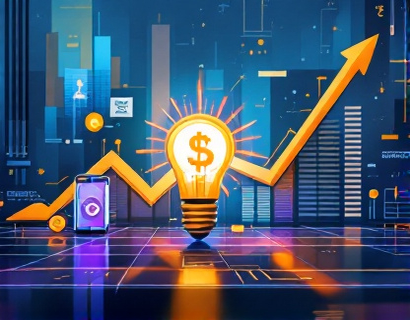Decentralized dApp Streamlines Cross-Blockchain Conversion of Digital Assets
The blockchain ecosystem is rapidly evolving, with numerous platforms emerging to cater to the diverse needs of users. As blockchain technology matures, the demand for efficient digital asset management solutions has surged. One of the most significant challenges faced by blockchain professionals and enthusiasts is the seamless transfer of digital assets across different blockchains. This is where decentralized applications (dApps) come into play, offering innovative solutions to streamline cross-blockchain conversions.
Understanding Cross-Blockchain Conversion
Cross-blockchain conversion refers to the process of transferring digital assets from one blockchain to another. This process is essential for users who wish to leverage the unique features and benefits of various blockchain platforms. However, the complexity of different blockchain protocols often makes this process cumbersome and inefficient. Traditional methods of asset conversion can involve multiple intermediaries, high fees, and lengthy transaction times, which can be frustrating for users.
The Role of Decentralized Applications
Decentralized applications are designed to operate on a peer-to-peer network, eliminating the need for a central authority. This decentralization offers several advantages, including enhanced security, transparency, and reduced costs. By utilizing smart contracts, dApps can automate processes, ensuring that transactions are executed efficiently and without the need for intermediaries. This is particularly beneficial for cross-blockchain conversions, where speed and reliability are crucial.
Benefits of Using a dApp for Cross-Blockchain Conversion
1. Seamless Asset Management
One of the primary benefits of using a dApp for cross-blockchain conversion is the seamless management of digital assets. Users can easily track and manage their assets across multiple blockchains from a single interface. This centralized management reduces the complexity associated with handling assets on different platforms, allowing users to focus on their investment strategies rather than the technicalities of asset transfer.
2. Enhanced Compatibility
Compatibility is a significant concern when dealing with multiple blockchains. Different blockchains often have unique protocols and standards, making it challenging to transfer assets between them. A well-designed dApp addresses this issue by ensuring that assets are compatible across various platforms. This compatibility allows users to convert their assets without worrying about technical discrepancies or potential losses.
3. Cost Efficiency
Traditional methods of cross-blockchain conversion often involve high fees due to the involvement of multiple intermediaries. In contrast, dApps operate on a decentralized network, significantly reducing transaction costs. By eliminating the need for third-party services, users can enjoy lower fees and retain more of their assets during the conversion process.
4. Speed and Efficiency
Time is of the essence in the fast-paced world of digital assets. Delays in asset conversion can lead to missed opportunities and potential losses. dApps are designed to execute transactions quickly and efficiently, ensuring that users can convert their assets in real-time. This speed is particularly advantageous in volatile markets, where prices can fluctuate rapidly.
5. Security and Transparency
Security is a paramount concern for blockchain users. dApps leverage the inherent security features of blockchain technology, such as cryptographic encryption and decentralized storage, to protect user assets. Additionally, the transparency of blockchain transactions allows users to verify the status of their conversions in real-time, providing peace of mind and confidence in the process.
How a dApp Facilitates Cross-Blockchain Conversion
The functionality of a dApp designed for cross-blockchain conversion typically involves several key components:
1. User-Friendly Interface
A user-friendly interface is essential for any dApp, especially one that deals with complex processes like cross-blockchain conversion. The interface should be intuitive, allowing users to navigate easily and perform conversions without extensive technical knowledge. Clear instructions and visual aids can enhance the user experience, making it accessible to both blockchain professionals and enthusiasts.
2. Smart Contracts
Smart contracts are self-executing contracts with the terms of the agreement directly written into code. In the context of cross-blockchain conversion, smart contracts automate the conversion process, ensuring that transactions are executed accurately and efficiently. By utilizing smart contracts, dApps can minimize the risk of human error and enhance the reliability of asset transfers.
3. Multi-Blockchain Support
A robust dApp should support multiple blockchains, allowing users to convert assets between various platforms seamlessly. This multi-blockchain support is crucial for users who hold assets on different blockchains and wish to take advantage of specific features or opportunities available on other platforms.
4. Real-Time Data and Analytics
Access to real-time data and analytics is vital for informed decision-making in the digital asset space. A dApp that provides users with up-to-date information on market trends, asset values, and conversion rates can empower users to make strategic choices regarding their asset management. This feature enhances the overall user experience and adds value to the dApp.
5. Community and Support
A strong community and support system are essential for any dApp. Users should have access to resources, tutorials, and customer support to assist them in navigating the platform and addressing any issues that may arise. A vibrant community can also foster collaboration and knowledge sharing among users, enhancing the overall ecosystem.
Challenges in Cross-Blockchain Conversion
While dApps offer significant advantages for cross-blockchain conversion, several challenges remain:
1. Regulatory Compliance
The regulatory landscape surrounding blockchain technology is constantly evolving. dApps must navigate complex legal frameworks to ensure compliance with local and international regulations. This compliance is crucial for building trust with users and ensuring the long-term viability of the platform.
2. Interoperability Issues
Interoperability between different blockchains is a significant challenge. Each blockchain operates on its own protocol, which can create barriers to seamless asset transfer. dApps must implement solutions that facilitate interoperability, allowing users to convert assets without encountering technical hurdles.
3. Security Vulnerabilities
Despite the inherent security features of blockchain technology, dApps are not immune to vulnerabilities. Hackers may target dApps to exploit weaknesses in their code or infrastructure. Continuous security audits and updates are essential to protect user assets and maintain trust in the platform.
4. User Education
Many users may lack the technical knowledge required to navigate dApps effectively. Providing educational resources, tutorials, and support can help bridge this knowledge gap, empowering users to take full advantage of the dApp's features.
The Future of Cross-Blockchain Conversion
The future of cross-blockchain conversion looks promising, with dApps playing a pivotal role in shaping the landscape. As blockchain technology continues to evolve, we can expect to see advancements in interoperability, security, and user experience. The integration of artificial intelligence and machine learning may further enhance the capabilities of dApps, allowing for more sophisticated asset management solutions.
Conclusion
In conclusion, decentralized applications are revolutionizing the way digital assets are managed and converted across different blockchains. By offering seamless, efficient, and compatible solutions, dApps empower blockchain professionals and enthusiasts to navigate the complexities of the digital asset landscape with ease. As the demand for cross-blockchain conversion continues to grow, the development of innovative dApps will play a crucial role in shaping the future of digital asset management.











































